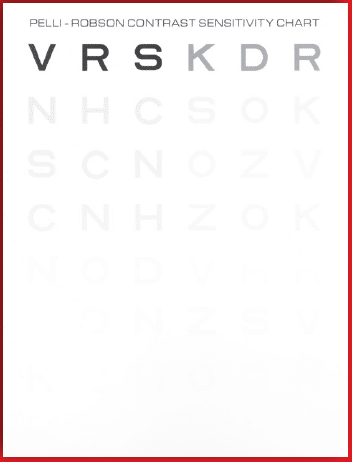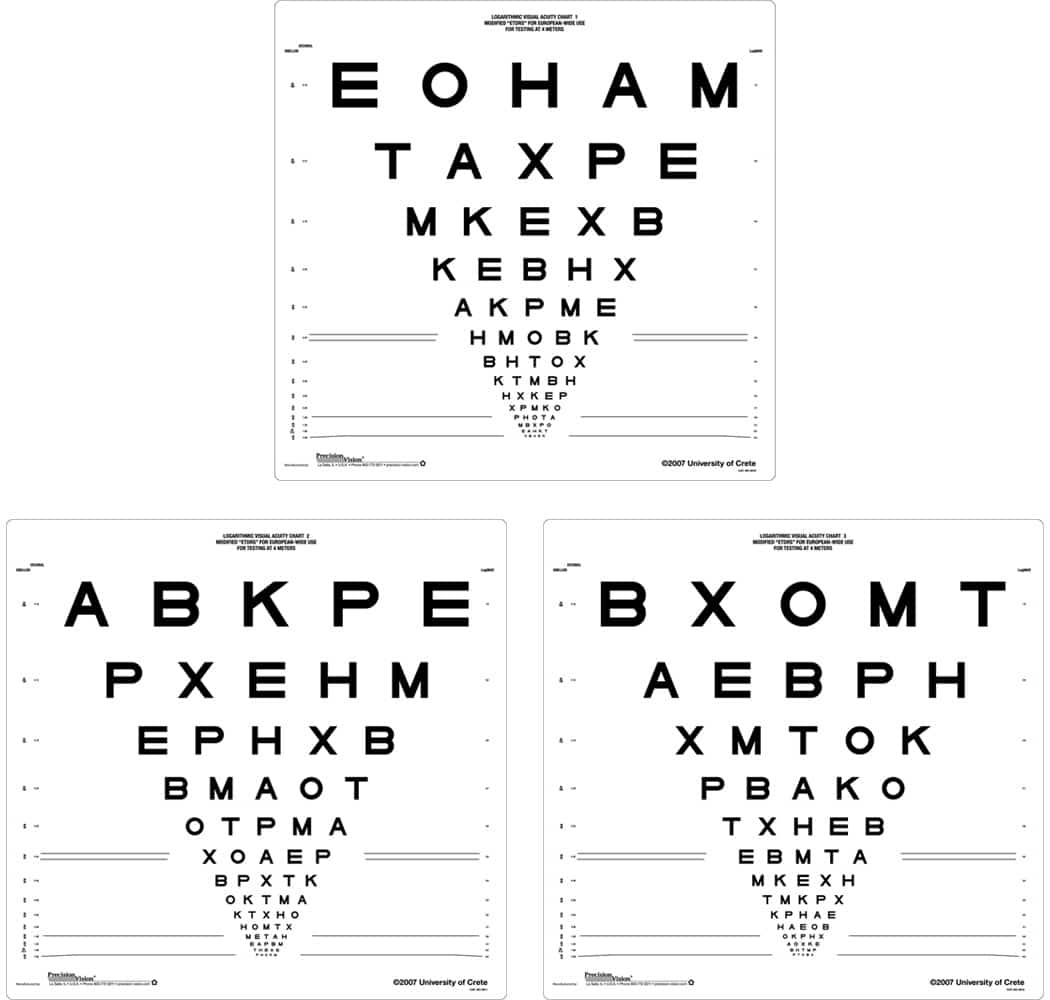
PV News – January 2010 – Letter Charts vs. Reading Tests – Precision Vision
IN THE NEWS
Happy New Year! We at Precision Vision hope you’ve entered 2010 with a great start. We have plenty of news and information for you this month, including history and information on vision testing, which we’ve always found fascinating, as well as some of our upcoming tradeshows. We hope to see many of you this year.
Reading Tests
Vision testing
Vision testing has a long history. Its recent history goes back to the mid-19th century when ophthalmology became the first organ-based specialty. Although most people will first think of letter charts, the story started with reading tests.
In 1854 Jaeger in Vienna printed reading samples as a supplement to a book on cataract surgery. They became an instant success. However, since “Jaeger numbers” were based on reference numbers from the Vienna State Printing House, it was difficult to reproduce them elsewhere with locally available type fonts. This explains the incredible variability among Jaeger cards today. In a random sample of 20 current cards, four labeled 1 M print (average newsprint) as J2, four others labeled it as J8. Jaeger never designed a distance chart.
In 1862 in Utrecht, the Netherlands, Snellen published his tests. They included not only reading tests, but also the letter chart, for which he is best known. Recognizing the need for standardization, he defined visual acuity and based its standard (20/20) on a physical measure (5 min. of arc) that could be reproduced anywhere. Snellen used small steps for good visual acuity, and larger steps for poor acuity.
In 1868 JohnGreen in St. Louis, who had done a fellowship with Snellen, proposed to make the progression consistent by using a logarithmic progression. Unfortunately, he was a century too early; his proposals received little attention. Although the logarithmic progression was occasionally used by others, it would not become a widely accepted standard until the introduction of the ETDRS charts in 1982.
Letter charts vs. reading tests
Letter charts are appropriate to test the optical function of the eye. Since they are simpler and faster than reading tests, they have often been the preferred test. However, as the attention of clinicians has been expanded from how the EYE functions to how the PERSON functions, reading tests have garnered more attention.
Reading tests are more comprehensive, since they are not only affected by the optics of the eye, but also by the condition of the retina, and by the ability to execute the proper eye movements for successive fixations. Frequently, patients state that they want to read the paper better; rarely do they state that they want to read a letter chart.
In modern reading tests, therefore, attention is not only paid to the letter size read, but also to the reading speed and to its relation to letter size. To this end all paragraphs on modern reading cards are of the same length with the same number of words and characters.
Choice of Reading tests
Precision Vision offers a number of letter charts for near-vision. Their use is appropriate to verify the focusing of a near vision correction.
In addition, Precision Vision offers various reading cards. They all offer standardized sentences and follow the standard logarithmic progression.
Precision Vision Chosen to Exclusively Manufacture and Distribute MN Read Cards
Precision-Vision is proud to announce that effective January 1, 2010 we are now officially the exclusive licensed manufacturer and distributor of the English MN Read Cards worldwide with Spanish underway. We hope to offer other languages later this year. We appreciate working with Dr. Gordon Legge and his staff at the University of Minnesota and welcome the opportunity to work with you as well.
Aside from working with Dr. Legge, we work closely with other doctors such as Dr. August Colenbrander on his series of mixed contrast eye charts, Dr. Wolfgang Radner on his Radner cards and many more.
In our February Newsletter, we will be discussing reading charts, specifically a description and comparison of those MN Read charts, Colenbrander Reading cards and Radner cards, and the differences between them. Stay tuned!
PRODUCT PROFILE
LETTER CHART: SLOAN Two Sided ETDRS Near Point Test
This near point chart features highly calibrated Sloan optotypes. This is the official ETDRS 2000 series chart 1 and 2 made in a near vision format calibrated for 40 cm. The attached cord ensures accurate viewing distance with several acuity notations to suit many different preferences. This chart is used extensively for clinical and research purposes.
READING CHART: Colenbrander Low Vision Reading Card
Continuous text charts focus on several areas of vision. These text charts help to simulate everyday activities that patients may encounter, such as reading the newspaper. Each card features proportionally spaced sentences that help to simulate reading activities. Basic reading assessment is important, since it may show the effect of para-central scotomata that do not yet interfere with central letter acuity.
SEE PV
Upcoming Tradeshows
Visit Precision Vision at the following tradeshows:

Share Your Stories With Us!
Precision Vision® wants to hear your stories. Tell us how you are impacting the industry. Do you have an interesting story to share about a Precision Vision® product? Contact us and we may use it in a future newsletter.





